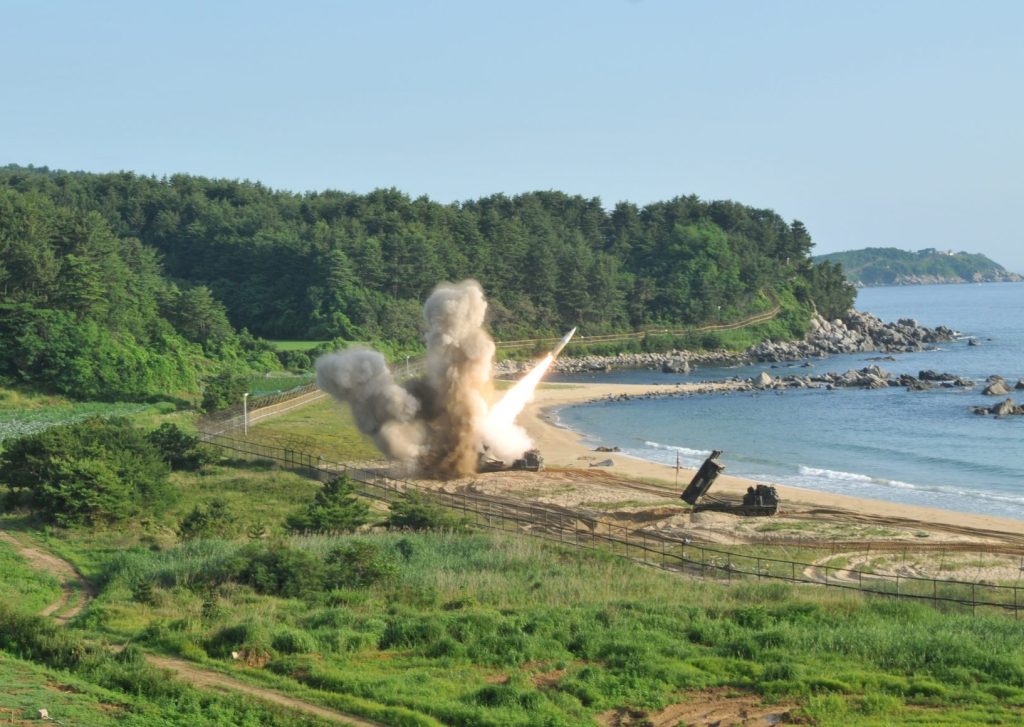For months, Ukraine has been asking the United States to supply long-range Army Tactical Missile Systems (ATACMS). In early September, a flurry of media reports emerged suggesting that the Biden Administration may now be about to give the green light for the long-range missiles. If confirmed, this would be the latest in a series of sagas related to military aid for Ukraine that have been marked by extended delays and fierce debate followed by eventual delivery.
ATACMS missiles are launched from the High Mobility Artillery Rocket System (HIMARS) platform. With an official range of 300 km, an ATACMS strike would be able to hit virtually any target in Russian-occupied Ukraine. As the crow flies, the current distance from the front line to the Sea of Azov is less than 100 km, while the Russian Black Sea Fleet’s main naval base in Russian-occupied Crimea is around 245 km from Ukraine’s current forward positions.
Stay updated
As the world watches the Russian invasion of Ukraine unfold, UkraineAlert delivers the best Atlantic Council expert insight and analysis on Ukraine twice a week directly to your inbox.
US missiles have already had a significant impact on the course of the war. In the summer of 2022, the US provided Ukraine with Guided Multiple Launch Rocket Systems (GMLRS) rockets, which are also launched from HIMARS and have a range of around 70 km. Ukraine used GMLRS missiles to conduct strikes on Russian logistics targets that were previously outside the range of artillery fire. As a result, Russia was forced to move ammunition depots and other major hubs beyond the range of GMLRS.
This disruption hindered the Russian military and helped pave the way for the liberation of Kharkiv Oblast and Kherson in the final months of 2022. The delivery of ATACMS missiles now has the potential to force the same kind of shift in Russian logistics planning and cause major disruption to the Russian war effort. Additionally, the considerably more powerful warhead that ATACMS missiles carry would be capable of striking larger targets than their shorter-range counterparts and causing even greater damage to Russian logistics networks as a result.
Calls for the United States to supply Ukraine with ATACMS have been growing since the early days of Russia’s full-scale invasion. Bipartisan legislation was introduced to that effect in the House of Representatives and passed by the House Foreign Affairs Committee. As Washington has agreed to Kyiv’s other requests, such as the delivery of tanks and Patriot air defense systems or allowing the transfer of F-16 fighter jets, these calls have only intensified.
To bolster their case, proponents have pointed to the battlefield impact of GMLRS deliveries in 2022. In response to these arguments, the Biden Administration has blamed low stockpiles, but the fact that newly produced ATACMS are slated only for foreign sales would appear to undermine such claims.
Eurasia Center events

Some observers say the Biden Administration’s apparent hesitation to supply Ukraine with long-range missiles reflects fears over Russia’s possible reaction. Since the full-scale invasion of Ukraine began in February 2022, Russia has repeatedly claimed that supplying Ukraine with various categories of weapons would constitute a red line and precipitate a major response. However, the West has crossed each of Russia’s supposed “red lines” without provoking any meaningful escalation from the Kremlin.
When it comes to ATACMS and Russia’s red lines, the US’s NATO allies have already set a precedent. The United Kingdom became the first country to supply long-range missiles to Ukraine, announcing the delivery of air-launched Storm Shadow cruise missiles, jointly developed by the UK and France, in May 2023. France announced deliveries of its variant of the Storm Shadow, SCALP, two months later. Both missile types are now in service and are being used effectively by Ukrainian forces.
By following the lead of the UK and France on long-range missiles, the Biden Administration might see the chance to demonstrate alliance unity. As a ground-launched system, ATACMS missiles would work in tandem with the SCALP and Storm Shadow missiles provided by the UK and France, which are launched from Ukraine’s Su-24 fighter jets. In a war zone where Ukraine is unable to secure total air superiority even at the local level, the ability to launch long-range missiles from the ground brings obvious advantages.
ATACMS missiles are not a wonder weapon capable of winning the war single-handed, of course. It also remains to be seen what rules of engagement the US would impose on their use. But Ukraine’s ability to use ATACMS in order to strike high-value targets throughout Russian-occupied Ukraine and seriously disrupt Russia’s logistics network would have a quantitative effect on the battlefield. The decision to provide Ukraine with this new category of weapon would also serve as a major morale boost for Ukraine’s military and the entire country.
Ukraine’s 2023 counteroffensive has shown that Russian forces are far more entrenched, and their logistics more sustainable, than in 2022. Despite these challenges, Ukraine has made some progress and continues to advance. ATACMS missiles would greatly increase Ukraine’s ability to strike the logistical networks supporting the invasion and would make it increasingly difficult for Putin’s army to operate inside Ukraine. This would bring Ukraine significantly closer to military victory, while sending a message to Moscow that any hopes of outlasting the West in Ukraine are futile.
Benton Coblentz is a program assistant at the Atlantic Council’s Eurasia Center.
Further reading
The views expressed in UkraineAlert are solely those of the authors and do not necessarily reflect the views of the Atlantic Council, its staff, or its supporters.

The Eurasia Center’s mission is to enhance transatlantic cooperation in promoting stability, democratic values and prosperity in Eurasia, from Eastern Europe and Turkey in the West to the Caucasus, Russia and Central Asia in the East.
Follow us on social media
and support our work
Image: United States and South Korean troops utilizing the Army Tactical Missile System (ATACMS) and the South Korea's Hyunmoo Missile II, fire missiles into the waters of the East Sea, off South Korea, July 5, 2017. 8th United States Army/Handout via REUTERS




